All the way from Toronto, an unlikely evangelist for the most Burmese of pastimes: chinlone, the wicker-ball hackey-sack dance-sport.
Greg Hamilton lists the reasons chinlone is the wrong activity for him. There are his physical limitations: a bone growth on his neck, flat feet and a snapped Achilles tendon that make it sometimes painful to perform the dance/hackysack hybrid that is something of a national pastime in Myanmar. There are the geographic obstacles: he lives in Toronto, about 8,000 miles away from Myanmar and his fellow chinlone practitioners. When he’s at home, instead of passing a woven bamboo ball around a circle with five other barefoot players in the tropical sun, Hamilton juggles the ball on his shoes alone in the snow.
But then, there are also the reasons chinlone is right for him. It has a peaceful, meditative quality that calms the anger inside him. There’s the cooperative element that seems to counter the hyper-competitiveness of modern society. Part art, part sport, part dance, chinlone is difficult to pin down. It involves six players in a circle performing acrobatic moves aimed at keeping the ball off the ground. It is practiced on the streets of Yangon, in the dirt clearings of Mandalay and in festivals all around the country from which it originated, Myanmar.
CALLING CHINLONE A SPORT AT ALL IS A BIT CONTROVERSIAL
It is hard to define chinlone, a team sport with no opposing team. In fact, calling it a sport at all is a bit controversial. It was an official event in the Southeast Asian Games when Myanmar was host last year. But there are traditionally no points, and no clear winners or losers, so in the competition the rules were rewritten so that opposing teams played consecutively in circular courts, with scoring based on how well the teams were able to keep the ball airborne while performing tricks at the same time. Nevertheless, the games were a watershed for the sport: Myanmar won the most gold medals (as expected), but countries from Singapore to Laos also medaled, and the closing ceremony itself featured an ode to chinlone.
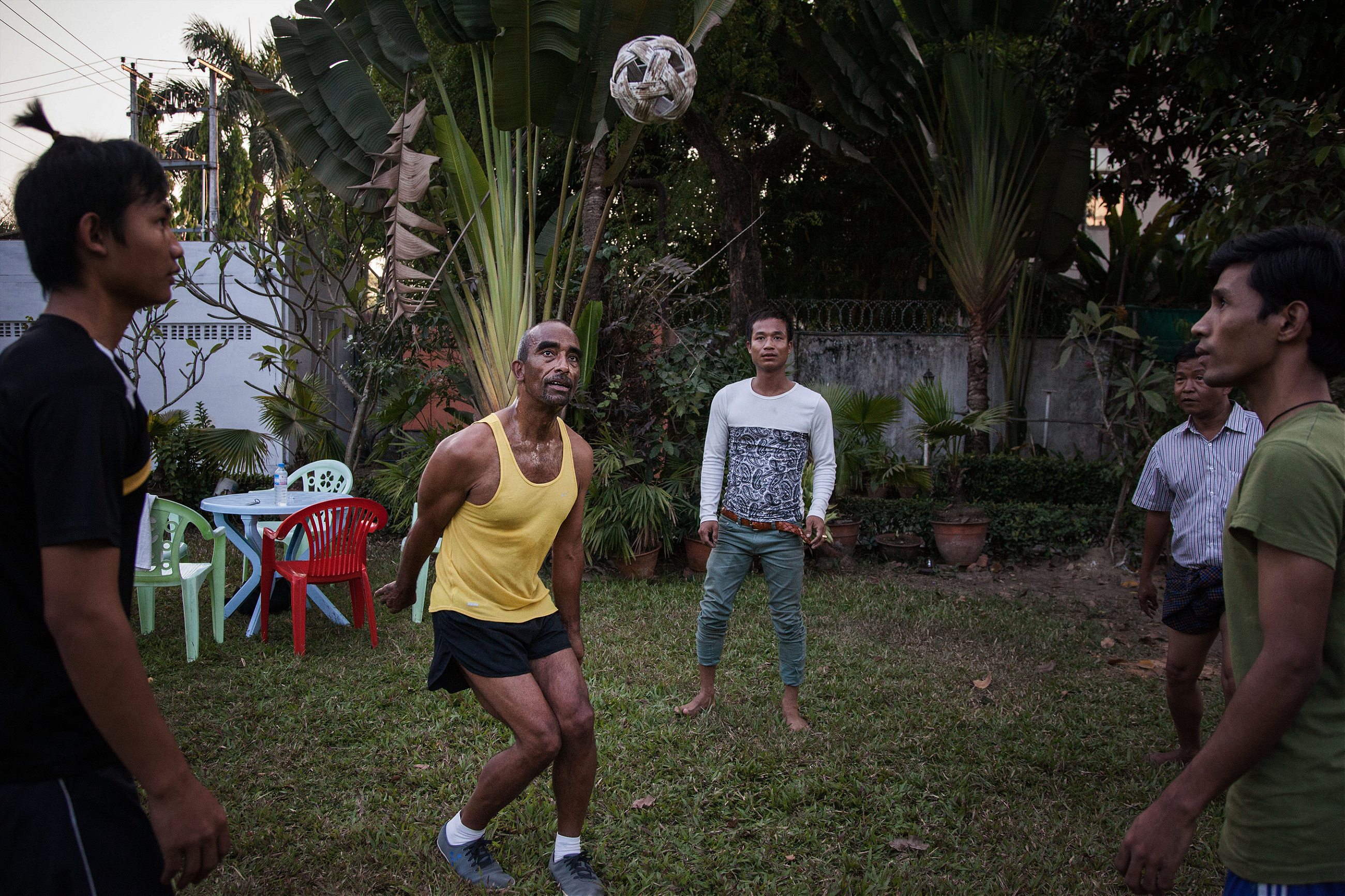
But if the pastime is hard to define, it is equally hard to define Hamilton and what he is trying to accomplish with it. Hamilton cuts a striking figure in Myanmar or Canada, a 60-year-old with the taut muscular build of a man far younger. He is a father who did not raise his children, a musician who hasn’t played seriously in years and a martial arts expert who claims to hate hurting people. He has worked in newspapers and as a bodyguard, sold stereo equipment and made jewelry. He spent time in Indonesia and Sudan—and before that, in the Canadian foster care system. His is half-black, half-white and grew up at a time when that was highly unusual in Canada. He barely knew his biological parents. His birth mother, he says, lived the “fast life” and his birth father spent time in prison for armed robbery.
Hamilton’s background, says his friend Terry McEvoy, is “the kind where you expect him to end up in prison.”
Instead, Hamilton has spent the last 30 years practicing the peaceful game of chinlone. For him, it’s not just a game, but an obsession, a salve for the modern condition, the perfect answer to a Western culture run amok by hyper competition. As one of the sport’s chief evangelizers abroad, he is determined to share it with the world and help it gain the recognition, at home and abroad, he believes it deserves.
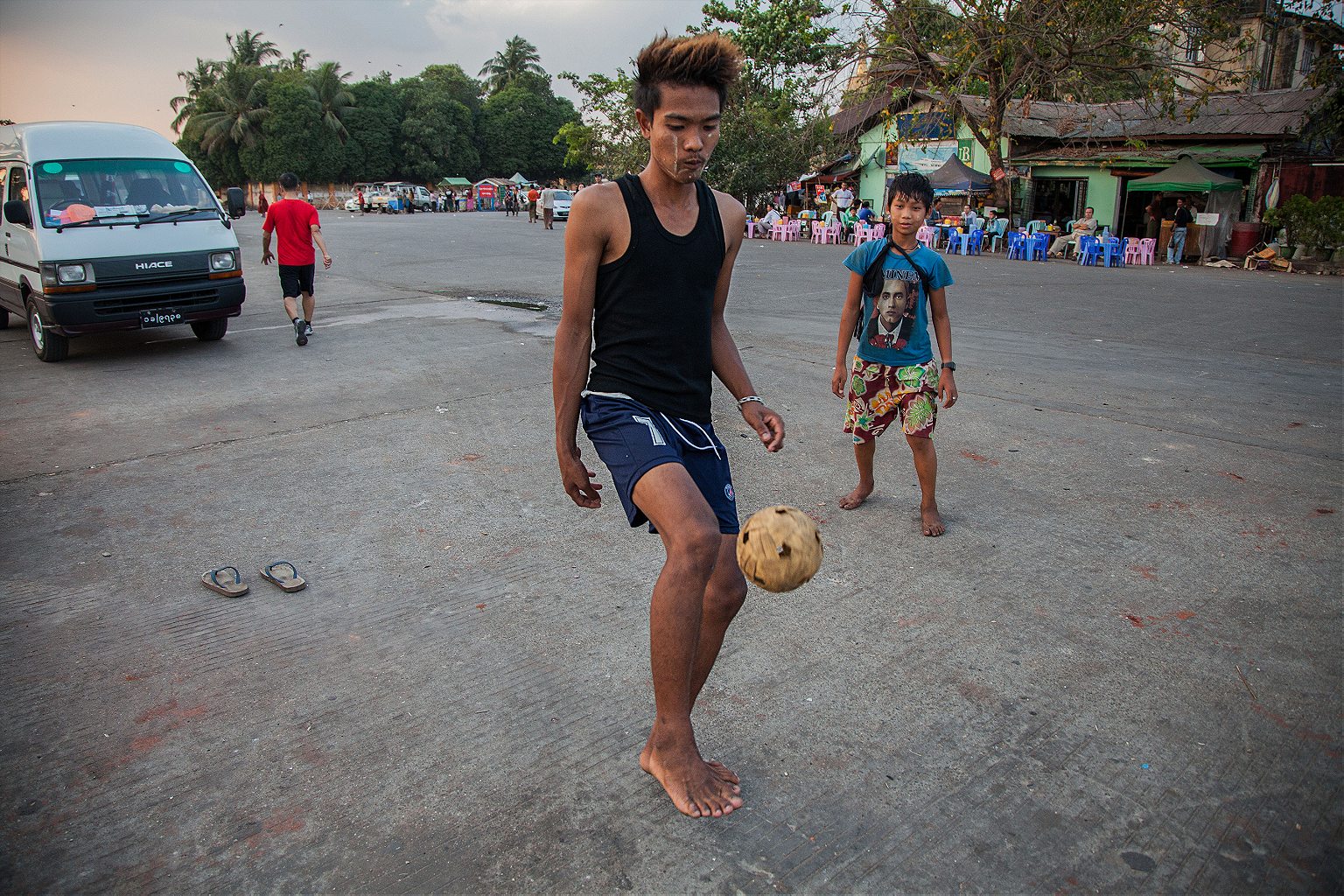
In an age where art forms like singing, cooking and dancing have been turned into brutalizing televised competitions, Hamilton sees a need for a more cooperative pastime. “All these turning things into contests I think is really bad, and I feel like chinlone as an art type has potential to be kind of an antidote to that,” says Hamilton.
It is a mission that Mark McDowell, Canadian Ambassador to Burma (Canada still officially uses the old term for the country), supports. At a time when outsiders are flocking to the newly opened country, McDowell sees chinlone itself as a potential ambassador between the two nations. To help with this he and Hamilton organized a Canadian Burmese chinlone festival in Mandalay in January.
“Burma’s been quite isolated for one reason or another for the last 50 years and there are a lot of things the outside world will be very excited and interested to learn about Burma,” says McDowell. Hamilton is “a great person to transmit that through his love of chinlone.”
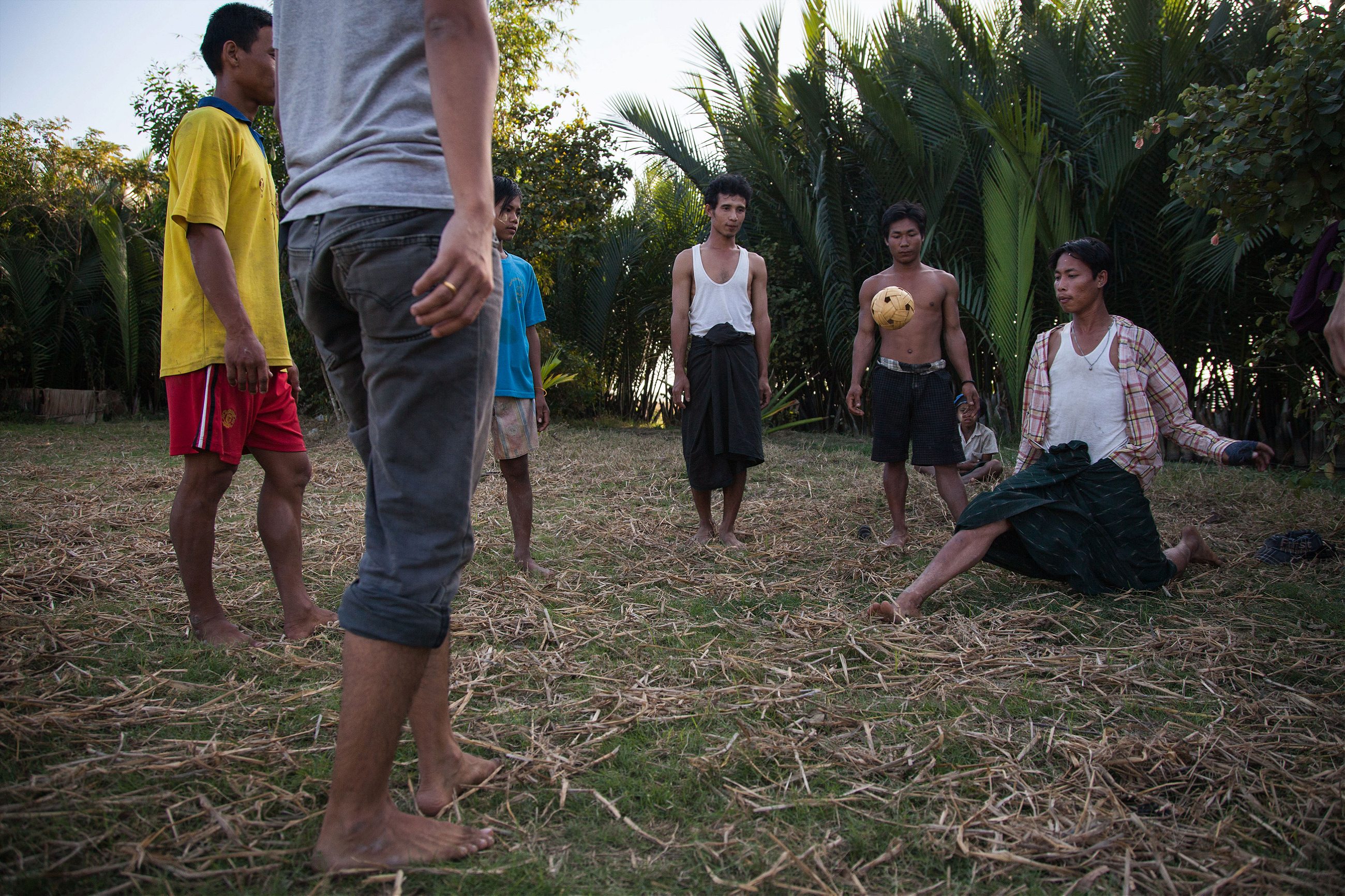
Myanmar now ranks at the top of many travel lists. But when Hamilton first ventured to the Southeast Asian country in 1986, tourists were a rare breed. At the time, Hamilton was living in Indonesia or Thailand (even he has trouble keeping track). He was making hand woven textiles and practicing chinlone, something he had been doing since 1981 when he stumbled upon a lone man playing in a Toronto park. He originally took up the sport to improve his martial arts training, which focused on Korean and southern Chinese forms. But the more he played, the less he cared about martial arts. Later he would describe a feeling of euphoria or trance-like state while playing chinlone, but back then it was something simpler: “pure play”.
ON HIS FIRST VISIT, HE DIDN’T MAKE IT PAST YANGON, WHICH WAS THE CAPITAL BACK THEN
The only problem: in Canada there was no one to play with and no chinlone balls. He tried making his own balls out of paper, but soon realized he would have to travel to Burma to really get the right equipment, much less properly learn the sport. On his first visit, he didn’t make it past Yangon, which was the capital back then. Visitors could stay only a week. There was no 22-story Traders Hotel, no shiny new SUVs, nothing vaguely new at all. The only person who spoke English at the first chinlone performance he attended was a military officer.
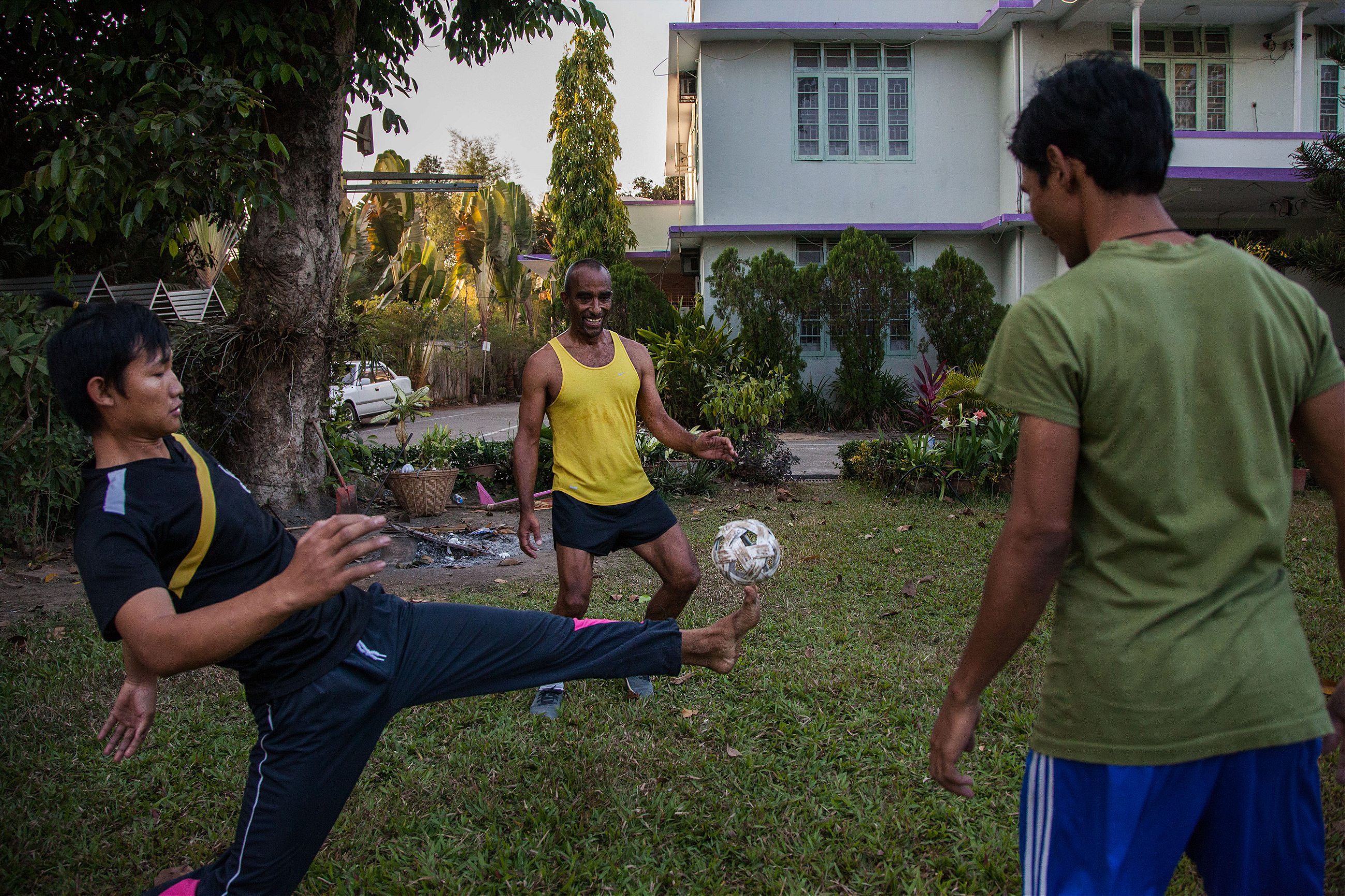
When Hamilton returned to Burma in 1997, he made it at last to Mandalay, the last royal capital and heart of chinlone territory. It was there that a shop girl directed him to master chinlone ball maker Than Gyi. At Than Gyi’s home, however, Hamilton was greeted with suspicion. Foreigners didn’t just visit locals back then. Talking to outsiders on the street could get Myanmar residents in trouble. Having them in your home was out of the question.
TALKING TO OUTSIDERS ON THE STREET COULD GET MYANMAR RESIDENTS IN TROUBLE
Contrast that with the reception he gets now. When he and I showed up at Than Gyi’s shop for an impromptu visit a few months ago, he was greeted with hugs. People passing on the street joined him on the plank bench outside the small street-side store. The men wanted to know if he would play chinlone with them later, the woman pointed out children who have grown into young adults since Hamilton last saw them. They have a strange respect for him, a westerner who came to their country to study their sport at a time when outsiders stayed away, the first foreigner to ever play in one of the country’s most prestigious chinlone festivals, Waso, in 2000.
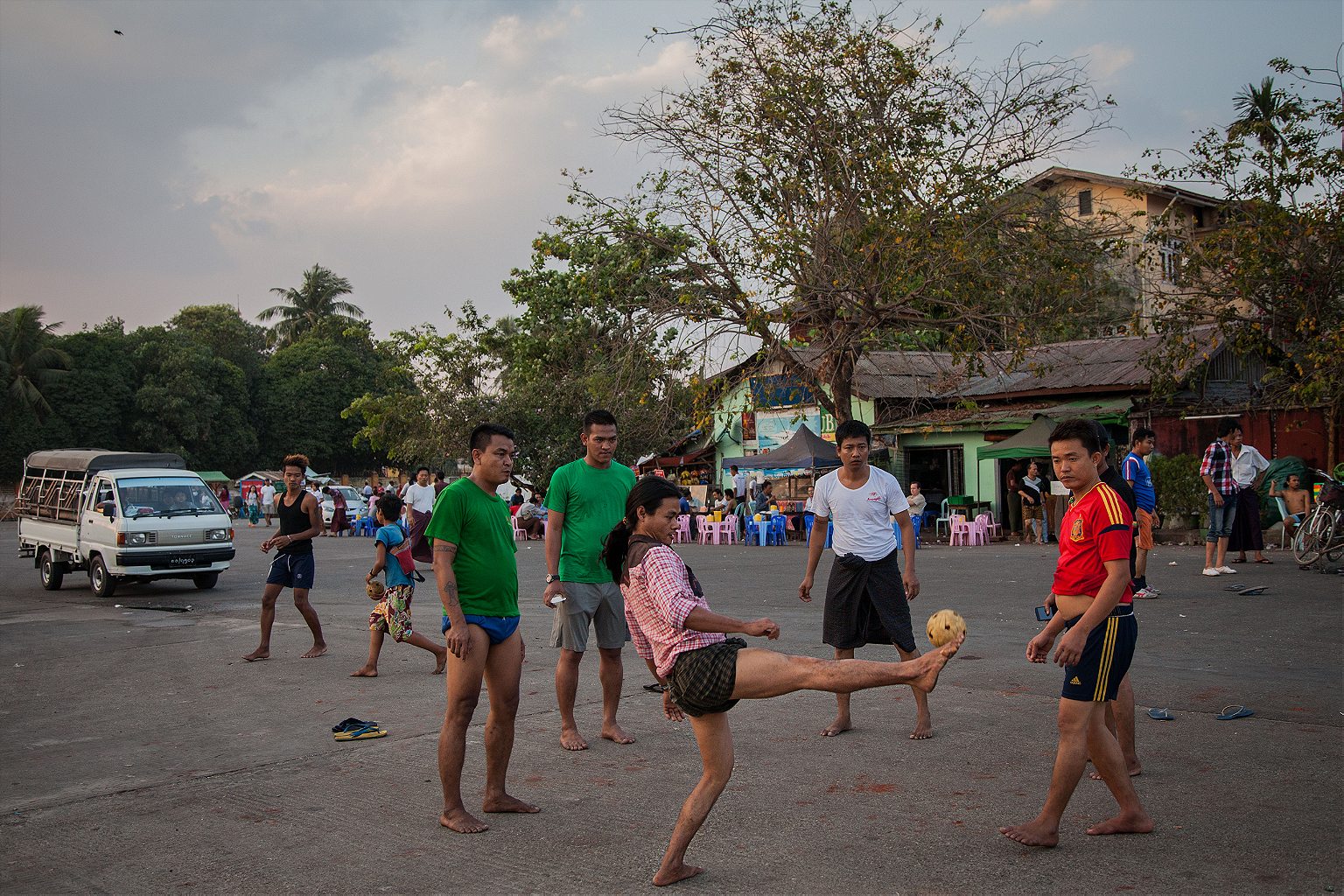
He has Than Gyi and several other Burmese teachers to thank for his high profile in the sport in Myanmar. His repeated visits after 1997 eventually won over Than Gyi, a former player who taught Hamilton some of his first moves. Hamilton learned how to spin and jump and keep the ball afloat in the center of the circle like a true minda or prince. Now he is bringing chinlone to the larger world, “the minda for chinlone in all other countries,” says Than Gyi.
The prince’s first effort was the 2006 documentary “Mystic Ball” which traces Hamilton’s love affair with chinlone. A spiritual piece that garnered praise at a number of film festivals, it was not an easy film to shoot. There were dozens of translators, the more disastrous including a drunk, and multiple meetings with government officials. When Hamilton approached the Ministry of Sports he was met with disbelief.
“They asked if I was serious, literally,” says Hamilton.They wanted to know why he was really in Burma, not believing he would come to their country for chinlone. The story was similar at the Ministry of Culture, only this time someone had the sense to direct him to the Ministry of Hotels & Tourism, where he finally found an official who understood that chinlone was a benign subject.
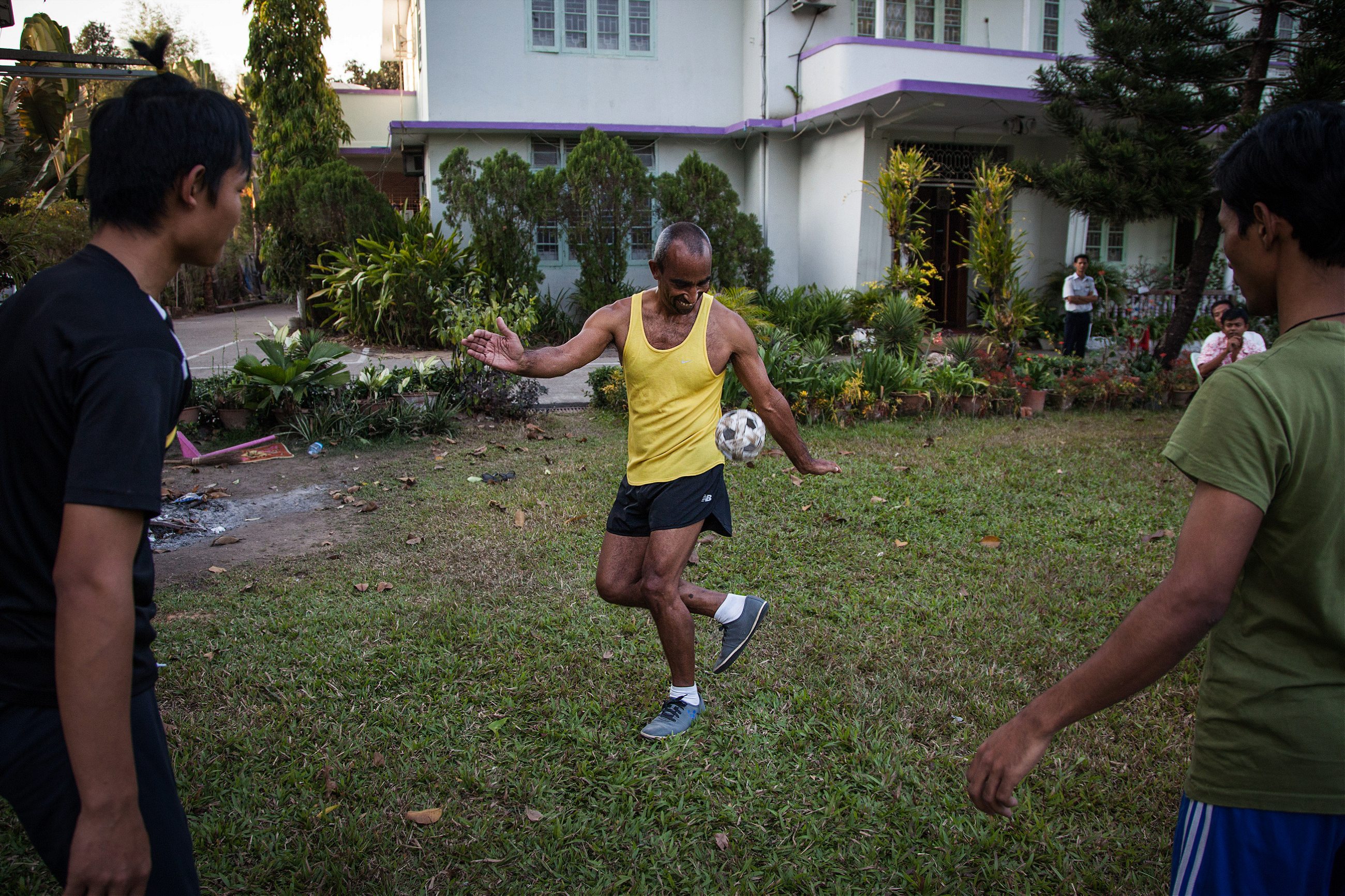
Those who see the film and the teams Hamilton has brought abroad to perform—like a group he took to Taiwan in 2011—get it. They send Hamilton emails from around the world and come to Myanmar to practice when he holds workshops. Part of the attraction may be the way Hamilton packages the performances. He oversees every detail for each touring chinlone group, from handmade uniforms to pre-recorded music, none of which is customary.
CHINLONE IS DIFFERENT: ANCIENT UNLIKE HACKEY SACK, UNIQUELY COOPERATIVE UNLIKE THE ASIAN VARIANTS WITH NETS AND SCORING
“You can’t just take chinlone from here and go boom Italy, Turkey or something,” he explains. “It has to be re-envisioned for that market.”
A Burmese audience accustomed to watching chinlone knows what to expect. But a foreign audience unfamiliar with the moves and multiple performances within the performance needs to be introduced to it at a slower pace.
Terry McEvoy fell for the sport, and Hamilton’s message, when he saw “Mystic Ball” at the 2006 Vancouver International Film Festival, a festival for which he serves as programmer of Canadian images. At 59, McEvoy still shows traces of the former soccer player when he takes up a chinlone ball. There is a value to competitive sports, says McEvoy, who accompanied Hamilton to Mandalay for the Canadian chinlone festival. But there is another value to a sport “born of love and kindness” like chinlone, a sport men and women and old and young can play together.
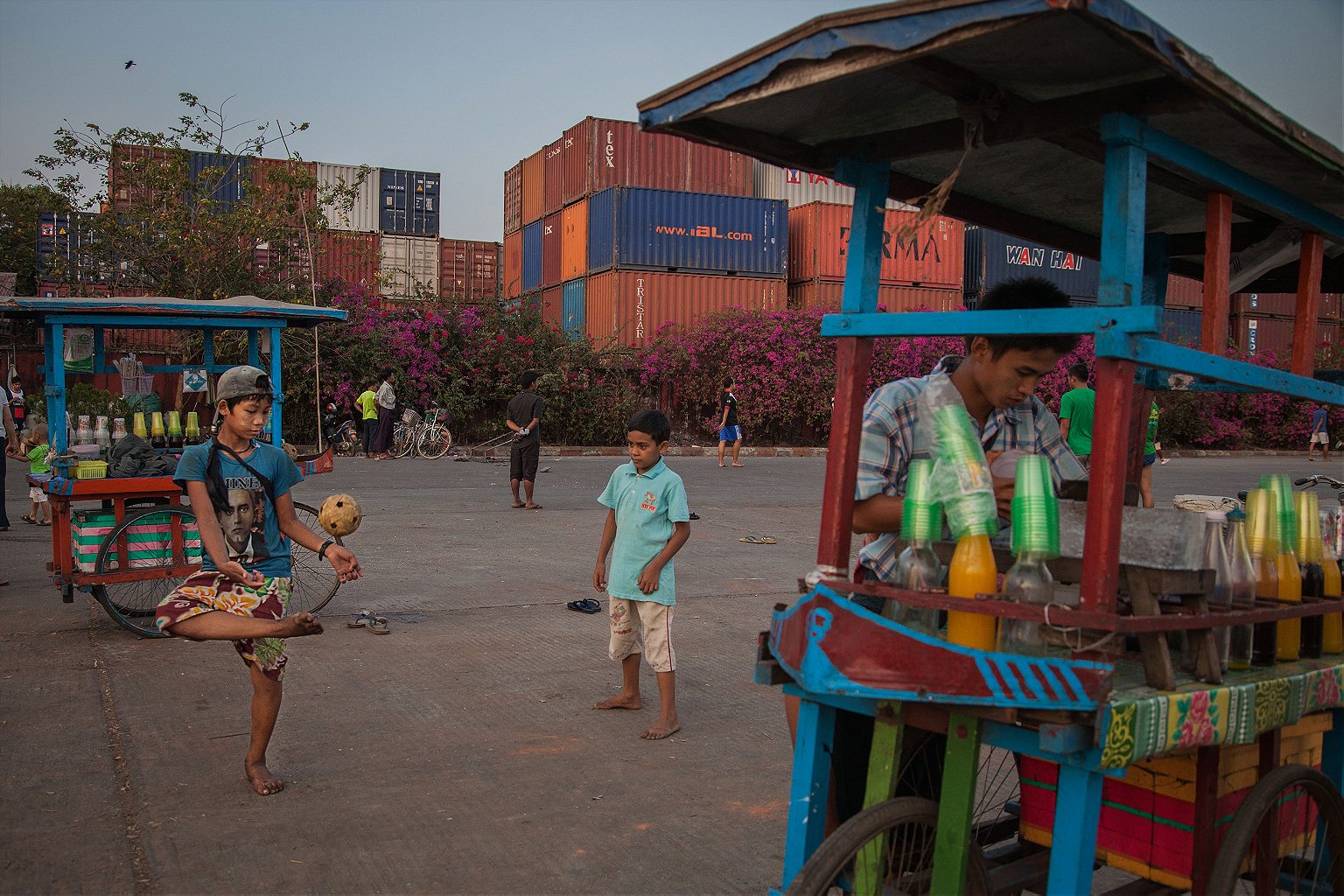
“I think if there were a lot more chinlone balls in disadvantaged areas around the world, including every city in North America, it would be a lot more peaceful place,” says McEvoy.
This may seem unlikely. Other related sports, from west coast hackey sack to Vietnamese đá cầu to Philippine sipa to Chinese jiànzi, haven’t sparked global spiritual movements. But chinlone is different: ancient unlike hackey sack, uniquely cooperative unlike the Asian variants with nets and scoring.
The Mandalay Hamilton remembers was a quiet backwater where residents rode bicycles, not the messy traffic jam it is today. The persistent fishy smell and trash heaps existed, but not the clog of cars, nor the dreaded motorcycles that have maimed and killed several of Hamilton’s Myanmar friends. Chinlone is changing as well, thanks in part to its inclusion in the 2013 Southeast Asian Games, chinlone has gained a new respect. The change is a continuation of what Hamilton began to see following his 2001 visit when he says chinlone was featured on Myanmar’s national television for the first time. Suddenly, he says, the “poor man’s sport” seemed to matter more.

McDowell compares Hamilton’s status in Burma to that of Canadian comedian Mark “Dashan” Rowswell in China. Just like the Chinese were amazed that a foreigner could master Chinese traditional comedy in Chinese, the Burmese are amazed that Hamilton has the interest and respect for Burmese culture, as well as the physical ability, to master chinlone.
“It’s a really powerful message that these types of activities, arts and sports, are really universal,” says McDowell.
When Hamilton visits with Kyaw Thein, the man in charge of the country’s most prestigious chinlone festival—the festivals are the main venues for elite chinlone performers across Myanmar—the mutual adoration is clear. They clasp hands and communicate as much as they can without the convenience of a shared language. Kyaw Thein still has the uniform Hamilton made for him years ago. He keeps it in a special place, too valued to wear.
Later, as Hamilton warms up under a canopy of trees, a young monk stops by to watch. Chinlone, the monk says, is like Myanmar’s football.
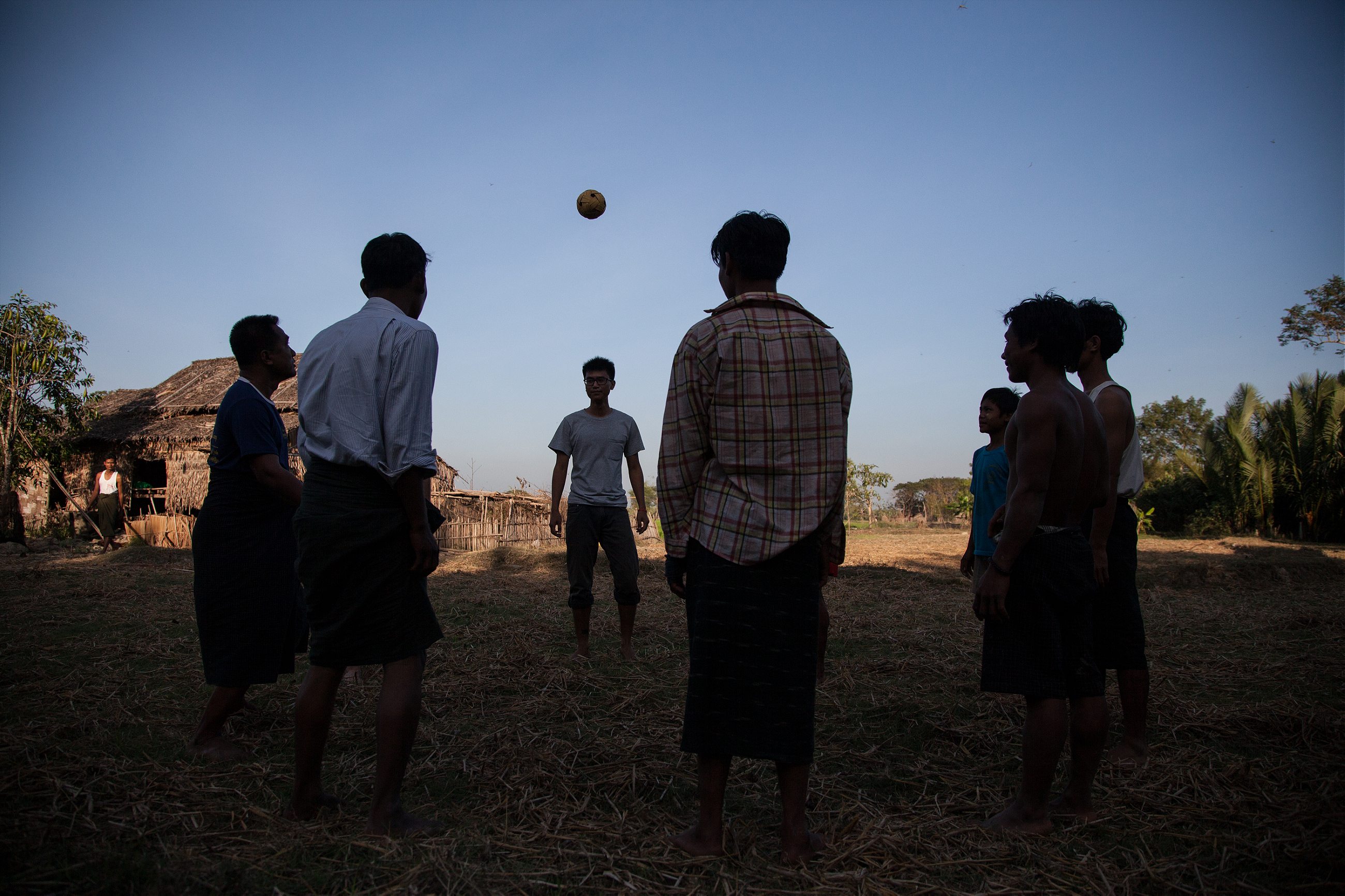
Maung Maung Gyi has served as Hamilton’s driver on past trips and has watched Hamilton improve year by year to the point where he is now “almost as good as a Burmese”.
“Everyone is amazed by him,” says Maung Maung Gyi. “Myanmar people are amazed a foreigner can play chinlone skillfully. They’ve never seen [it] before.”
Hamilton’s driver, San Htay, grew up in a nearby village. He can make a chinlone ball from the branch of a palm tree and recognizes the basic moves. But it wasn’t until he started listening to Hamilton that he understood the true importance of the sport.
SAN HTAY CAN MAKE A CHINLONE BALL FROM THE BRANCH OF A PALM TREE
“Before I just played for fun and health,” he says. “Greg, he plays with meaning.”
San Htay rattles off the merits of the game, the elements of sharing and cooperation that make it different from competitive sports, the spiritual component that is somehow intertwined with Buddhism.
Whether or not Hamilton can make converts back in his home country and beyond, there’s still something beautiful about this stranger playing the game in a park in Myanmar. Young men begin to appear, tying their longhis around their legs or taking them off to reveal running shorts underneath. A small circle forms and the players take turns hitting the ball over their heads, bouncing it off a knee and over their back, juggling it from foot to foot. When it is Hamilton’s turn he performs equally graceful moves, spinning the ball over his shoulder, jumping and striking simultaneously.

Lauren DeCicca is a freelance photographer living in Myanmar. Find more of her work here.